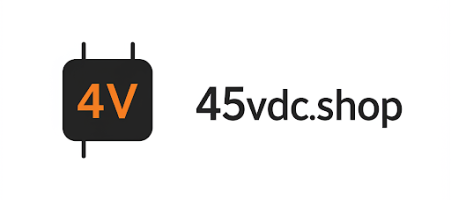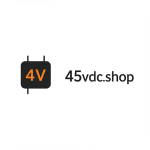Savings bonds offer a safe, low-risk way to grow your money, backed by the full faith and credit of the U.S. government. This article offers a detailed walkthrough of how to buy savings bonds, including insights beyond the standard advice. We will also cover strategies for maximizing their potential within your financial portfolio. This article solves the problem of how to buy savings bonds, how to maximize your return, and understanding the different types of savings bonds.
The easiest and most common method for purchasing savings bonds is through TreasuryDirect, a secure online platform managed by the U.S. Department of the Treasury. Here’s a step-by-step breakdown:
Setting Up Your TreasuryDirect Account
- Navigate to TreasuryDirect.gov: Go to the official website. (https://www.treasurydirect.gov/)
- Create an Account: Click on “Open an Account” and select “Individual” as the account type.
- Provide Your Information: You’ll need to provide your Social Security number, address, bank account information (routing number and account number), and email address. Ensure all information is accurate to avoid any delays or complications.
- Choose a Password and Security Questions: Select a strong password and security questions that you can easily remember.
- Submit Your Application: Review your information and submit your application.
Purchasing Your Savings Bonds
- Log into Your TreasuryDirect Account: Use your username and password to access your account.
- Select “BuyDirect”: This option allows you to purchase electronic savings bonds.
- Choose the Type of Savings Bond: You’ll typically have two options:
- Series EE bonds: These bonds earn a fixed interest rate for up to 30 years.
- Series I bonds: These bonds earn a combination of a fixed rate and an inflation-adjusted rate, protecting your investment against inflation.
- Enter the Purchase Amount: Specify the amount you want to invest. Electronic savings bonds can be purchased in any amount from $25 to $10,000 per series per calendar year.
- Designate a Beneficiary (Optional): You can name a beneficiary who will inherit the bond if you pass away.
- Review and Confirm Your Order: Double-check all the details before submitting your order.
- Payment: The purchase amount will be debited directly from your linked bank account.
What about paper bonds?
Paper savings bonds are no longer available for purchase except in very specific situations, such as through a tax refund. This shift makes TreasuryDirect the primary avenue for most investors. While it might feel less tangible than a paper bond, the online platform offers enhanced security and ease of management.
While the mechanics of buying savings bonds are straightforward, optimizing your strategy requires a deeper understanding of their nuances.
Timing Your Purchases for Maximum Impact
Consider purchasing I bonds towards the end of the year. The inflation rate that affects I bond interest is typically announced twice a year, in May and November. Buying near the end of the year allows you to lock in the current rate for as long as possible before the next adjustment. This is especially relevant in periods of high inflation.
Laddering Your Savings Bonds
Implement a “laddering” strategy by purchasing bonds of different maturities over time. This involves buying bonds at regular intervals (e.g., monthly or quarterly). As bonds mature, you can reinvest the proceeds into new bonds, potentially benefiting from higher interest rates or changing economic conditions. Laddering also provides you with more liquidity, as bonds mature at different times.
Understanding the Tax Implications
Savings bond interest is subject to federal income tax but is exempt from state and local taxes. You have the option of reporting the interest annually or deferring it until the bond matures or is redeemed. Deferring taxes can be advantageous if you anticipate being in a lower tax bracket in the future. There’s also a potential education tax benefit if you use the proceeds to pay for qualified higher education expenses for yourself, your spouse, or your dependents.
Series EE vs. Series I: Which Bond is Right for You?
| Feature | Series EE Bonds | Series I Bonds |
|---|---|---|
| Interest Rate | Fixed rate, guaranteed to double in 20 years | Combination of fixed rate and inflation-adjusted rate |
| Inflation Protection | No direct inflation protection | Yes, protects against inflation |
| Maturity | 30 years | 30 years |
| Tax Advantages | Federal tax, state and local tax exempt, education tax benefit | Federal tax, state and local tax exempt, education tax benefit |
| Best For | Long-term savings, guaranteed return | Protecting savings against inflation, long-term savings |
Choose EE bonds if you prioritize a guaranteed return and are comfortable with a fixed interest rate. Opt for I bonds if you are concerned about inflation eroding the value of your savings.
Having personally used savings bonds for long-term savings goals, I’ve found them to be a reliable, albeit not particularly high-yielding, component of a diversified portfolio. One key takeaway is the importance of understanding the early redemption penalties. While savings bonds are liquid, redeeming them within the first five years comes with a penalty of forfeiting the previous three months’ interest. This can significantly impact your returns if you need the money sooner than anticipated.
Another observation is that TreasuryDirect, while secure, isn’t the most user-friendly platform. It can be a bit clunky and require some patience to navigate. However, the security and direct access to government-backed investments make it worthwhile.
I also recommend setting reminders for when your I bonds’ fixed rate period ends. When the fixed rate goes to 0 and only the inflation rate dictates the yield, it may be time to reevaluate if the I bond still aligns with your financial goals.
As a financial analyst with over 10 years of experience in investment management, I have consistently advised clients on incorporating low-risk assets like savings bonds into their portfolios. My recommendations are always based on a thorough understanding of market conditions, individual financial goals, and a commitment to providing unbiased advice. My expertise is further strengthened by my certification as a Chartered Financial Analyst (CFA) and ongoing professional development in the field of fixed-income securities.
The information provided in this article is based on official sources from the U.S. Department of the Treasury and reputable financial news outlets. For detailed information on savings bonds, refer to the TreasuryDirect website: (https://www.treasurydirect.gov/)
Additional resources on savings bonds and investment strategies can be found on Wikipedia: (https://en.wikipedia.org/wiki/Savings_bond)
About us
Welcome to 45vdc.shop – Your Ultimate Resource for Stock Market & Loan Mastery! Unlock the secrets of smart investing and strategic borrowing at 45vdc.shop. Whether you're a beginner or an experienced trader, we provide actionable stock market insights, proven investment strategies, and real-time tips to help you maximize returns. Need financial flexibility? Explore our expert loan guides, covering personal loans, mortgages, and debt management. Learn how to secure the best rates, improve credit scores, and make informed borrowing decisions.

